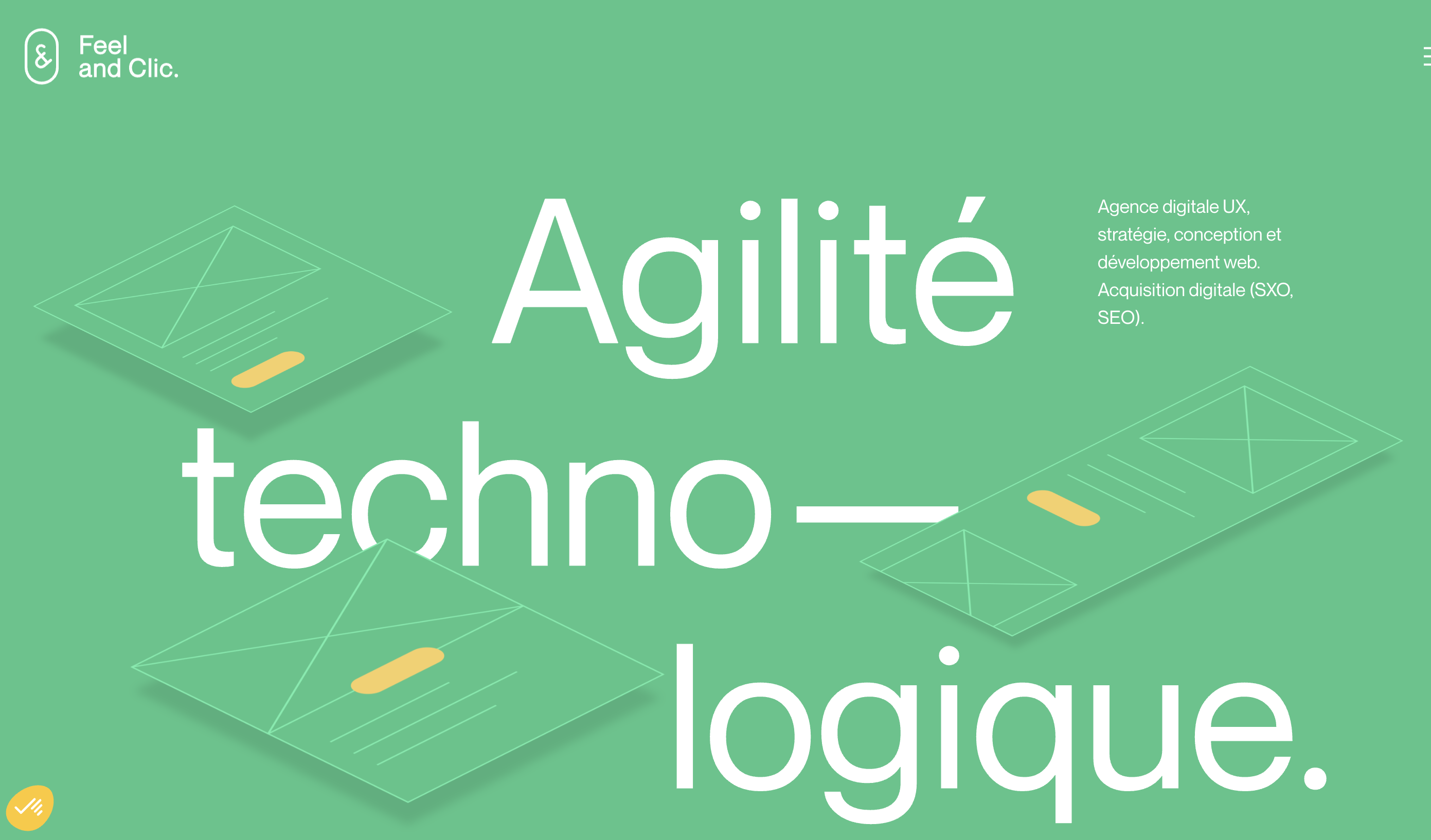Understanding the Paradox of Simplicity in Design
Decoding Simplicity in Design
In the realm of design, simplicity is often hailed as the ultimate sophistication. Yet, achieving simplicity is anything but simple. It requires a deep understanding of what the customer truly needs and values in their journey with a product or service. The paradox of simplicity lies in its ability to distill complex processes into intuitive and engaging experiences that resonate with users.
For businesses, crafting a seamless customer experience involves more than just aesthetic minimalism. It demands a strategic approach that considers the entire customer journey. This means every touchpoint, from initial contact to post-purchase service, must be designed to enhance customer satisfaction and retention. Companies must leverage customer feedback and data to refine their offerings continually, ensuring that each interaction leaves a positive impression.
Moreover, a good customer experience strategy should not only focus on reducing friction but also on creating meaningful interactions that build trust and loyalty. This involves balancing functionality and aesthetics, as explored further in the article. A visually appealing design that lacks usability can frustrate users, while a highly functional product that ignores aesthetic appeal might fail to engage them emotionally.
By understanding the paradox of simplicity, businesses can improve customer experiences, leading to greater customer success and retention. For those interested in exploring how simplicity and user experience intersect with SEO strategies, this harmonious approach offers valuable insights.
The Role of Empathy in Crafting Customer Experiences
Empathy: The Cornerstone of Customer-Centric Design
In the realm of design, empathy is more than just a buzzword; it is the foundation upon which great customer experiences are built. Understanding the customer journey involves stepping into the shoes of the customer, experiencing the product or service from their perspective. This approach not only helps in creating a positive customer experience but also in fostering customer satisfaction and loyalty.
Empathy allows companies to anticipate the needs and emotions of their customers, paving the way for experiences that resonate on a personal level. When a business prioritizes empathy, it can transform its customer service into a powerful tool for customer retention. By actively listening to customer feedback, a company can refine its products and services, ultimately enhancing the overall experience strategy.
Empathy in Action: Building a Customer-Centric Team
To truly embrace empathy, companies must cultivate a team that values customer success as much as the bottom line. This involves training team members to be attentive to customer feedback and encouraging them to think critically about how their actions impact the customer journey. A customer-centric team will not only improve customer experiences but also contribute to a brand's reputation as a provider of good customer service.
Moreover, data plays a crucial role in understanding and implementing empathy-driven design. By analyzing customer data, businesses can identify patterns and trends that reveal the underlying needs and desires of their audience. This information is invaluable in crafting experiences that are not only functional but also emotionally engaging.
Incorporating empathy into the design process is a continuous journey, much like the iterative design approach discussed in other sections. It requires constant reflection and adaptation to ensure that the customer experience remains seamless and satisfying. For more insights on enhancing user experience through empathy and other strategies, consider exploring enhancing user experience for SaaS platforms.
Balancing Functionality and Aesthetics
Striking the Right Balance
In the realm of design, achieving a harmonious balance between functionality and aesthetics is crucial for creating a positive customer experience. This balance ensures that a product or service not only looks appealing but also serves its intended purpose effectively. Companies that excel in this area often see improved customer satisfaction and retention, as their products and services resonate well with users.
To craft a great customer experience, businesses must consider both the visual elements and the usability of their offerings. A visually stunning product may initially attract customers, but if it fails to meet their functional needs, the overall experience can quickly turn negative. Conversely, a highly functional product that lacks aesthetic appeal might not capture the attention of potential customers. The key lies in integrating these two aspects seamlessly, creating a product that is both beautiful and practical.
Feedback: A Critical Component
Customer feedback plays a vital role in this balancing act. By actively seeking input from users, companies can gain valuable insights into how their products and services are perceived. This feedback helps businesses identify areas where they may need to adjust their design strategy to better meet customer expectations. A well-designed feedback loop can lead to continuous improvement, fostering a positive customer journey and enhancing the overall experience.
Data-Driven Decisions
Incorporating data-driven insights into the design process is another way to ensure a successful balance between functionality and aesthetics. By analyzing customer data, businesses can identify trends and preferences, allowing them to tailor their offerings to better suit their target audience. This approach not only helps in creating products that are both visually appealing and highly functional but also aligns with the company's brand and experience strategy.
Ultimately, achieving the right balance between functionality and aesthetics is a dynamic process that requires ongoing attention and adaptation. By prioritizing customer feedback and leveraging data, companies can create experiences that delight users and drive customer success. For further insights into creating accessible and engaging user experiences, consider exploring making UX accessible for everyone.
Iterative Design: The Path to Simplicity
Embracing the Iterative Approach in Design
In the quest for a seamless customer experience, the iterative design process stands as a pivotal strategy. This approach allows companies to refine their products and services continuously, ensuring that each iteration brings them closer to a truly customer-centric solution. By embracing iteration, businesses can respond to customer feedback promptly, enhancing customer satisfaction and retention.
Iterative design involves a cycle of prototyping, testing, analyzing, and refining a product or service. This process is not just about making changes; it's about making informed decisions based on real data and customer insights. A great customer experience often hinges on how well a company can adapt and evolve its offerings in response to customer needs and expectations.
Feedback as a Catalyst for Improvement
Customer feedback is a goldmine for any business aiming to improve customer experiences. It provides invaluable insights into what works and what doesn't in a product or service. By incorporating feedback into the iterative design process, companies can make strategic adjustments that align with customer desires, ultimately leading to a more positive customer journey.
Moreover, involving customers in the design process can foster a sense of ownership and loyalty. When customers feel heard and see their suggestions implemented, it enhances their overall experience with the brand, contributing to a positive customer perception and a stronger net promoter score.
Creating a Collaborative Design Environment
Successful iterative design requires a collaborative effort from the entire team. Designers, developers, and customer service representatives must work together, sharing insights and expertise to create a cohesive product service. This collaboration helps ensure that the final design not only meets aesthetic and functional standards but also aligns with the company's experience strategy.
By fostering a culture of collaboration and open communication, companies can better manage the complexities of design, turning potential challenges into opportunities for innovation and growth. This team-oriented approach not only improves the design process but also contributes to a more unified and effective customer experience management strategy.
The Invisible Complexity Behind Seamless Experiences
Unveiling the Hidden Layers of Seamlessness
Creating a seamless customer experience might appear straightforward on the surface, but it requires a complex interplay of various elements behind the scenes. Companies often strive to deliver products and services that feel intuitive and effortless to their users. However, this simplicity is the result of meticulous planning and execution.
At the heart of a seamless experience lies a deep understanding of the customer journey. A business must map out every touchpoint a customer interacts with, ensuring each one contributes positively to the overall experience. This involves gathering and analyzing customer feedback to identify potential friction points and areas for improvement. By doing so, companies can refine their experience strategy to better align with customer expectations.
Data plays a crucial role in this process. Businesses collect vast amounts of information to understand customer behavior and preferences. This data is invaluable in tailoring the customer experience, allowing companies to anticipate needs and deliver personalized service. A great customer experience often hinges on these insights, which guide the design and functionality of products and services.
Moreover, the role of the team cannot be understated. A dedicated team focused on customer success is essential in managing and implementing changes that enhance the customer journey. Their expertise ensures that the brand consistently delivers a good customer experience, fostering customer satisfaction and retention over time.
Ultimately, the invisible complexity behind seamless experiences is a testament to the careful balance of empathy, functionality, and aesthetics. By continuously iterating and refining their approach, businesses can create experiences that not only meet but exceed customer expectations, leading to a positive customer journey and a strong net promoter score.
Case Studies: Learning from Successful Simple Designs
Learning from Real-World Examples
Examining successful designs can provide valuable insights into creating a seamless customer experience. These case studies highlight how companies have effectively balanced the paradox of simplicity, empathy, and functionality to enhance their brand and customer satisfaction.
Case Study 1: A Tech Giant's Approach to User-Centric Design
One leading technology company has consistently prioritized user experience by integrating empathy into their design process. By actively seeking customer feedback and iterating on their products, they ensure a positive customer journey. Their design team focuses on simplifying interfaces without compromising on functionality, resulting in a product service that is both intuitive and powerful.
Case Study 2: Retailer Revolutionizing Customer Service
A major retailer transformed its customer service by implementing a design strategy that emphasizes the customer's journey. By using data to understand customer needs and preferences, they crafted a service customer approach that is responsive and personalized. This focus on customer success has led to improved customer retention and a higher net promoter score, showcasing the power of a well-designed experience strategy.
Case Study 3: Financial Institution's Seamless Digital Experience
In the financial sector, a well-known bank has excelled in creating a seamless digital experience for its customers. By balancing aesthetics with functionality, they have developed a platform that simplifies complex financial tasks. Their iterative design process, informed by customer feedback, ensures that their products services remain relevant and user-friendly, ultimately enhancing customer satisfaction.
These examples illustrate that achieving a seamless customer experience requires a deep understanding of the customer's needs, a commitment to continuous improvement, and a balance between functionality and aesthetics. By learning from these successful designs, businesses can improve customer experiences and foster positive customer relationships.










